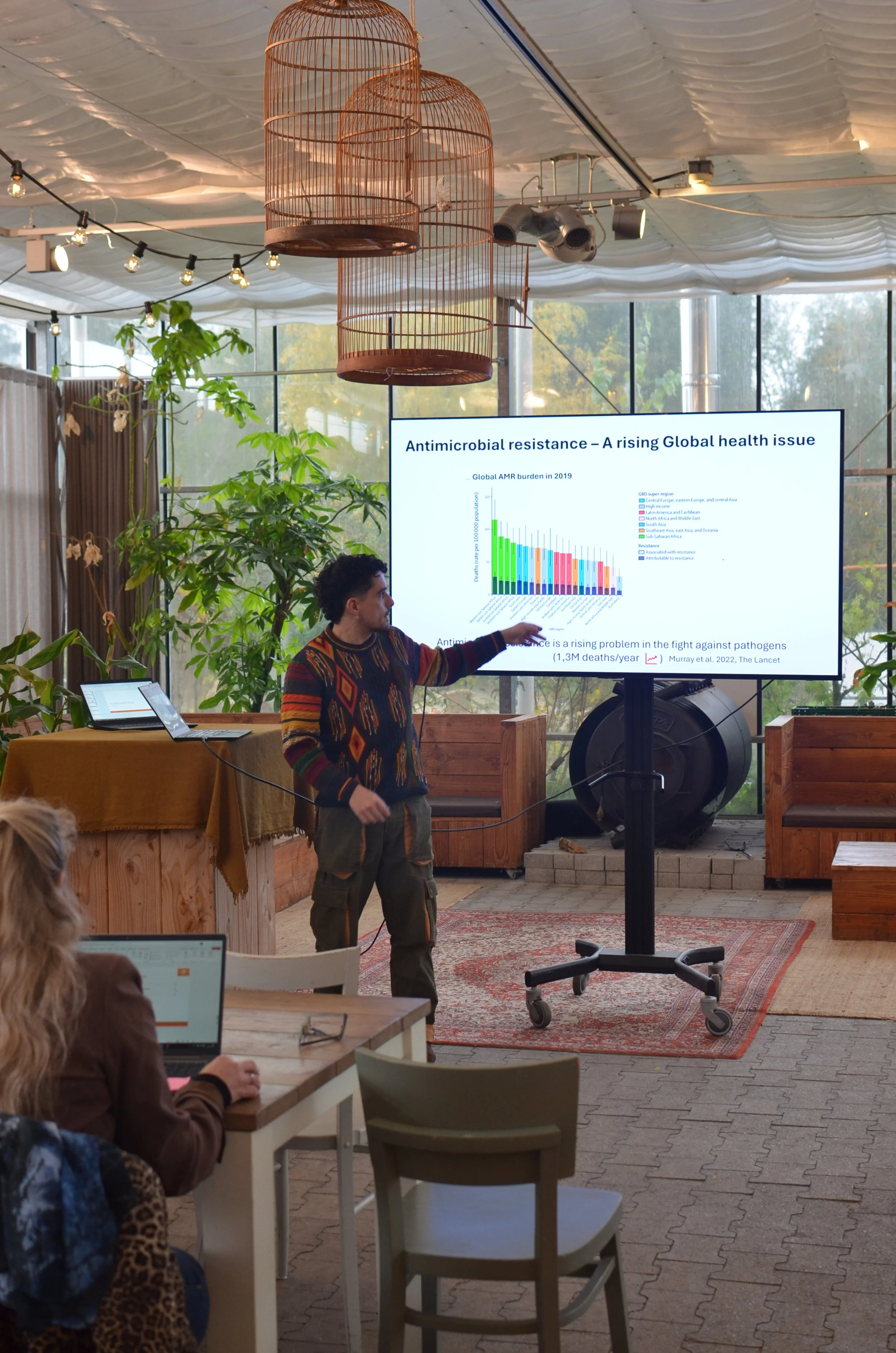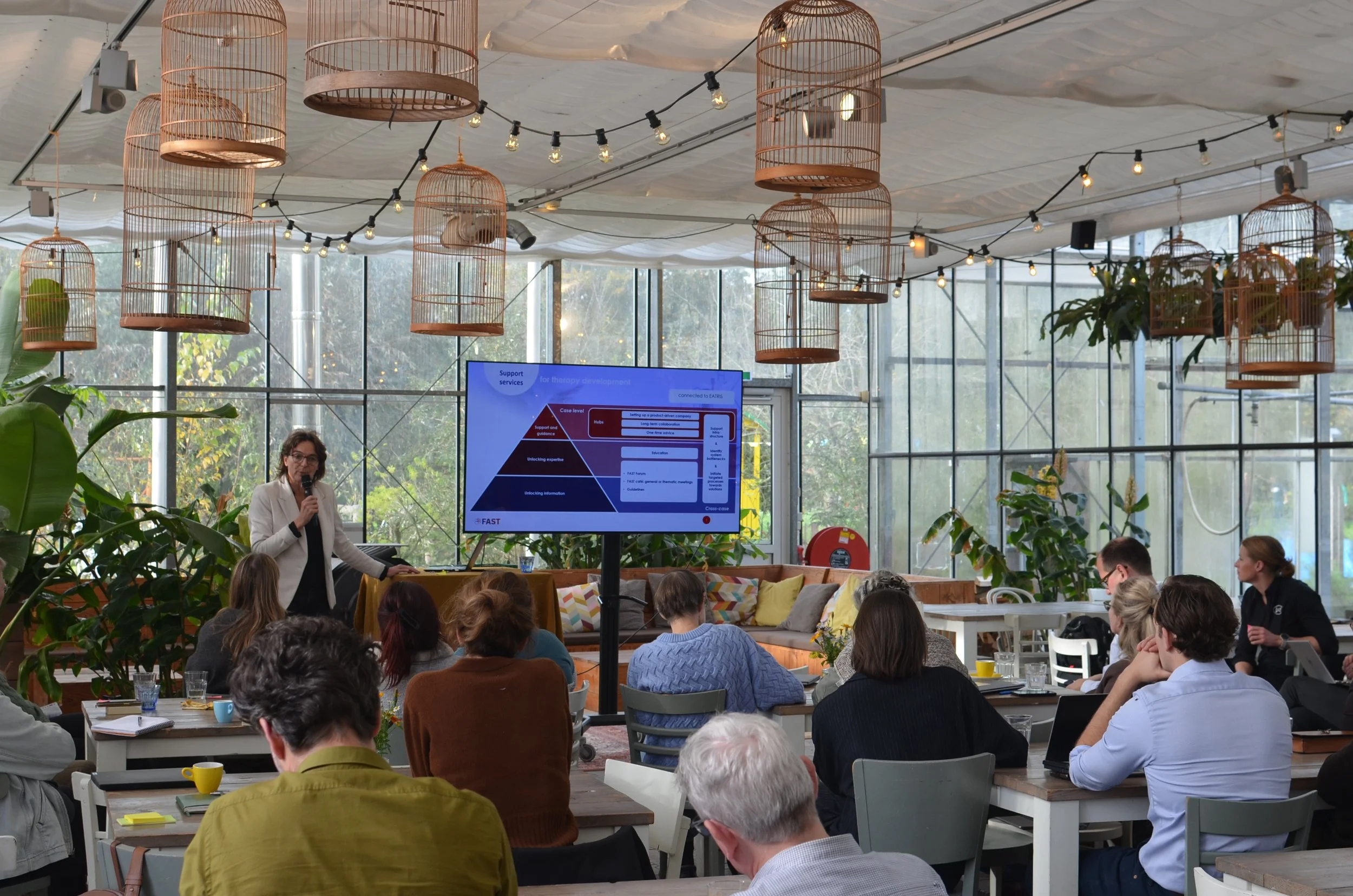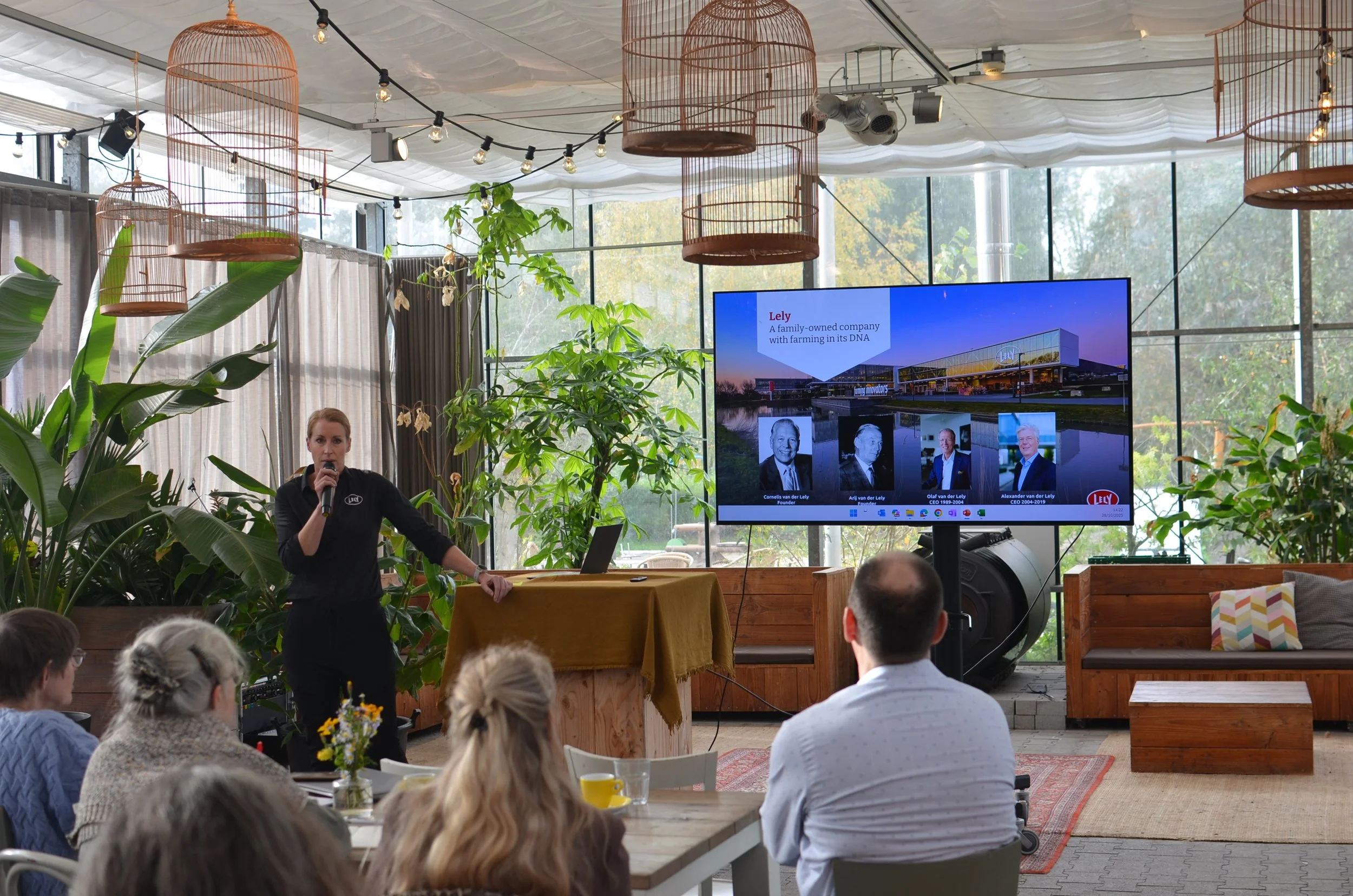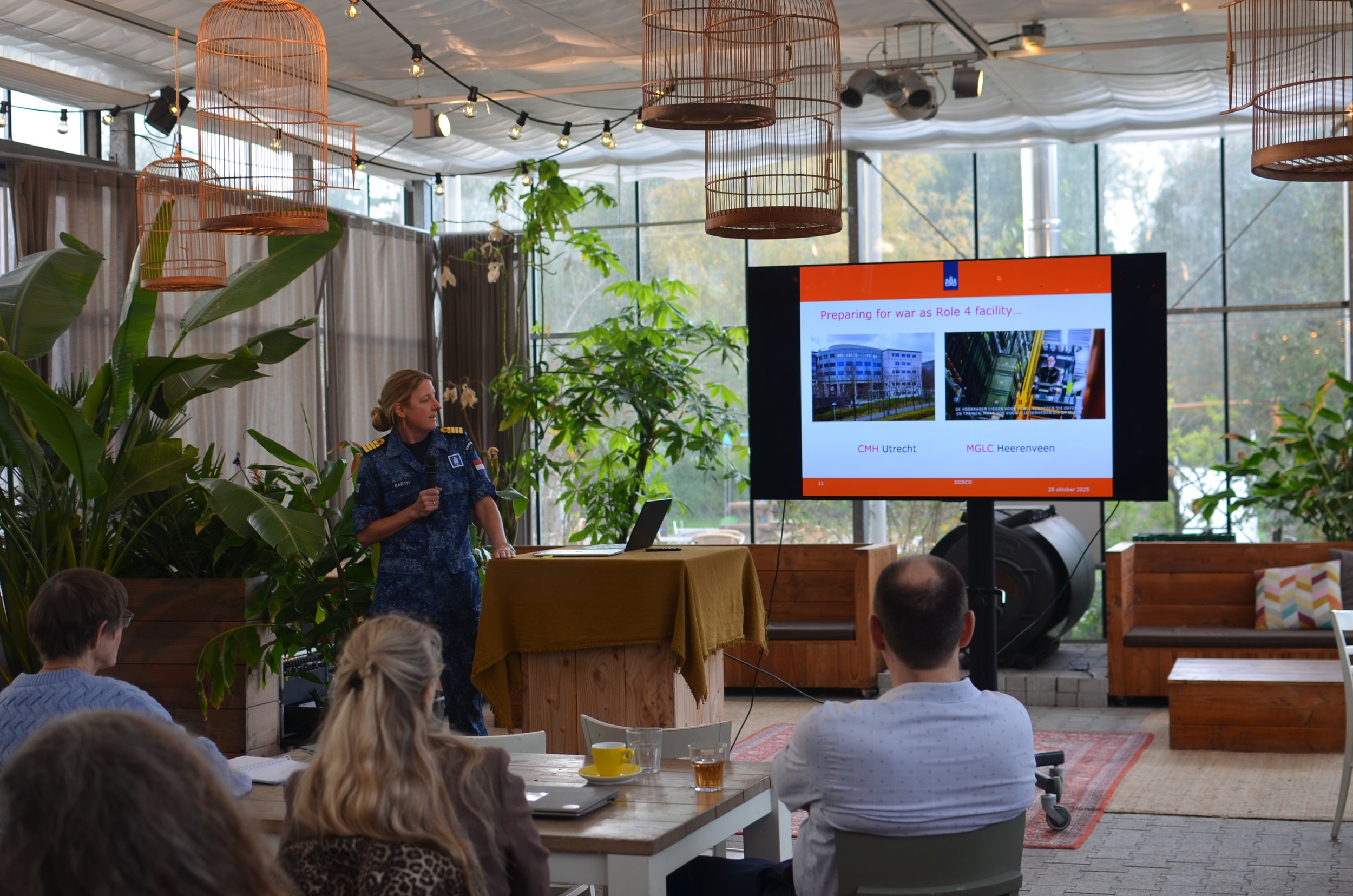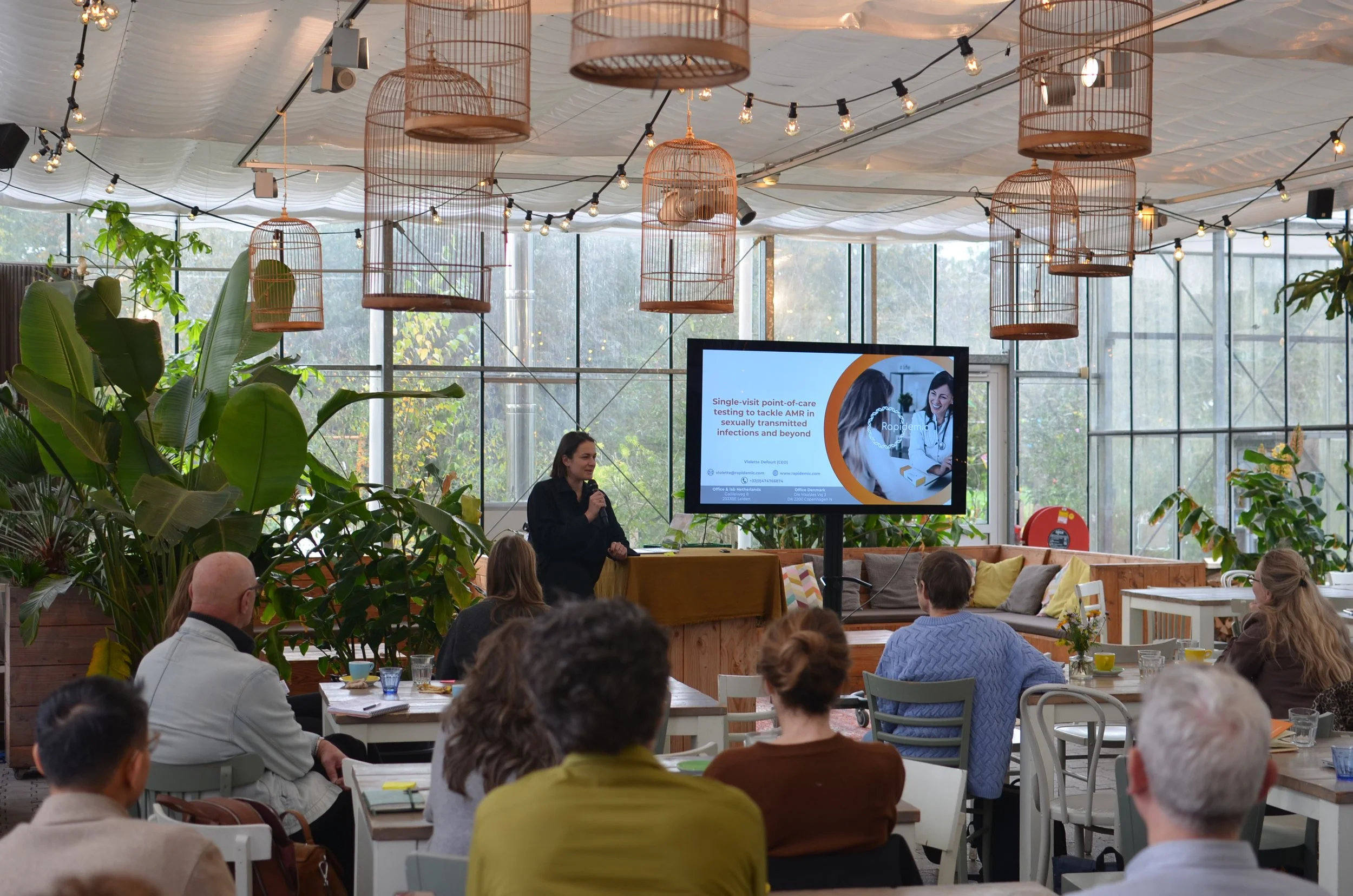Consortium puts heads together at annual meeting to ‘jointly move forward’
The AMR-Global consortium hosted a vibrant meeting with the theme “Jointly moving forward” on 28 October. The event brought together representatives from academia, the private sector, public institutes, government, and the military to discuss progress and partnerships in tackling antimicrobial resistance (AMR).
Willo Brock (Coalition for Epidemic Preparedness Innovations) reflected on Dutch leadership in AMR product development and the challenges that remain. Benien Vingerhoed (Centre for Future Affordable Sustainable Therapy Development) then highlighted collaborative national initiatives (such as FAST and InFECT-NL/INFECTA) that are accelerating therapy development in infectious diseases and complement AMR-Global’s work.
Innovation and technology for AMR stewardship took the spotlight with Rozan van Rossum (Lely) presenting how AI and robotics can help reduce antimicrobial use in livestock, after which Roos Barth (Ministry of Defence) discussed the strategy behind antibiotic stockpiling. Violette Defourt (Rapidemic) introduced a rapid, single-visit, real point-of-care testing approach to tackle AMR in sexually transmitted infections and beyond, followed by Sophia Shanko (ShanX Medtech), who outlined a new standard for rapid antimicrobial susceptibility testing.
The event concluded with a lively panel discussion, where questions centred on enhancing collaboration with the Ministry of Defence, CEPI, and other national and international stakeholders. In particular, participants explored how coordination with the Ministry of Defence, the Ministry of Health, Welfare and Sport and government research organisation ZonMw could strengthen joint resilience efforts, significantly enhance funding mechanisms, and innovation pathways for AMR-related initiatives.
The dialogue underscored the growing recognition that effective AMR solutions require not only scientific and technological innovation but also strong intersectoral partnerships - including collaborations with regulators, national and global human and veterinary professional societies, and public health partners, to create essential markets.

